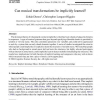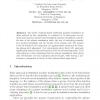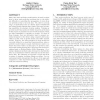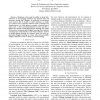413 search results - page 38 / 83 » IT alignment: what have we learned |
COGSCI
2004
13 years 7 months ago
2004
The dominant theory of what people can learn implicitly is that they learn chunks of adjacent elements in sequences. A type of musical grammar that goes beyond specifying allowabl...
ICMCS
2006
IEEE
14 years 1 months ago
2006
IEEE
Recently, many learning systems, such as e-learning and WBT (Web Based Teaching) systems have been developed. In these systems, users can get educational contents and graphical ma...
IJCNLP
2005
Springer
14 years 1 months ago
2005
Springer
The merit of phrase-based statistical machine translation is often reduced by the complexity to construct it. In this paper, we address some issues in phrase-based statistical mach...
KDD
2008
ACM
14 years 8 months ago
2008
ACM
Many time series prediction methods have focused on single step or short term prediction problems due to the inherent difficulty in controlling the propagation of errors from one ...
ICRA
2007
IEEE
14 years 2 months ago
2007
IEEE
— Ubiquitous robots need the ability to adapt their behaviour to the changing situations and demands they will encounter during their lifetimes. In particular, non-technical user...




